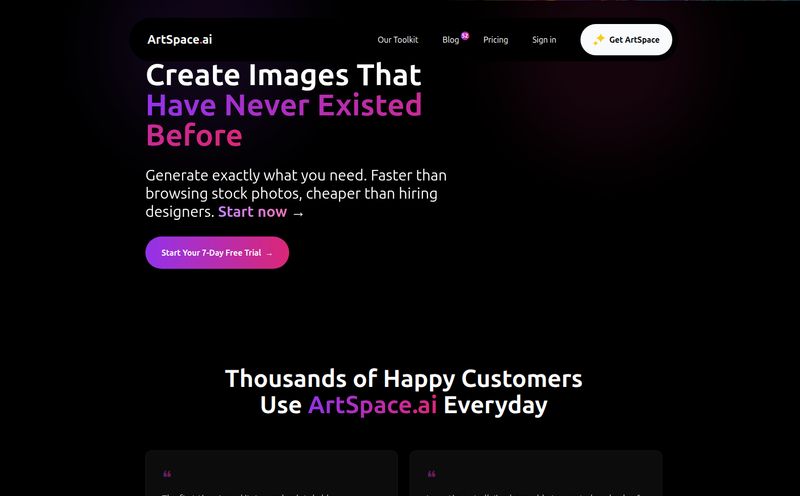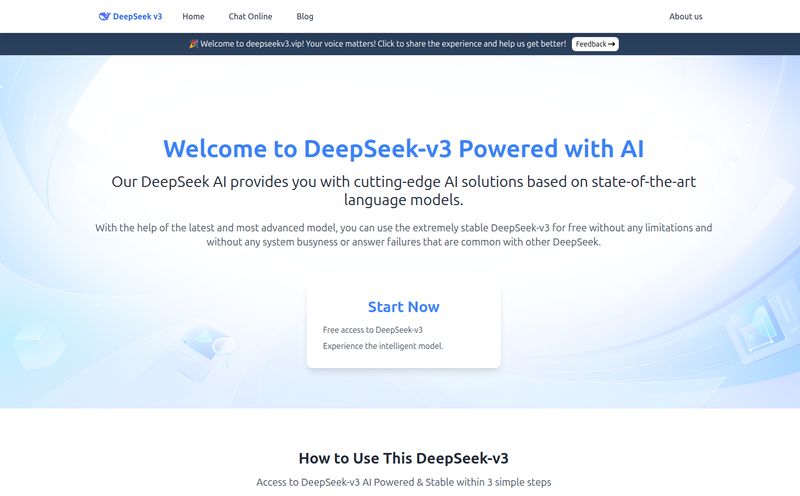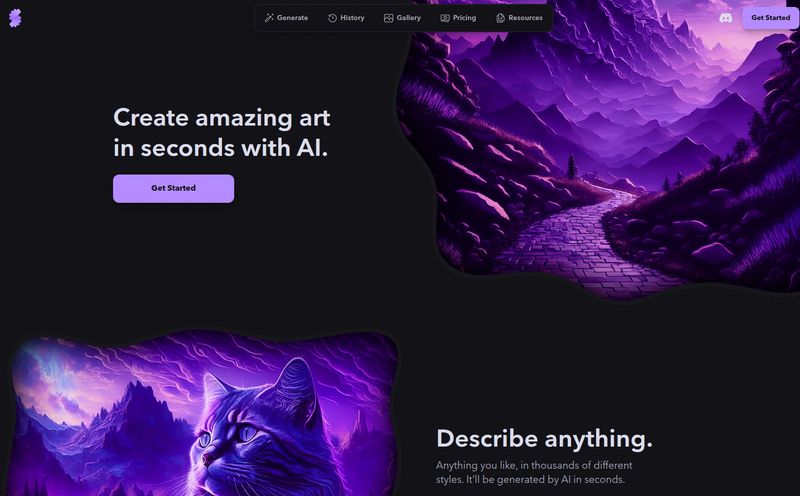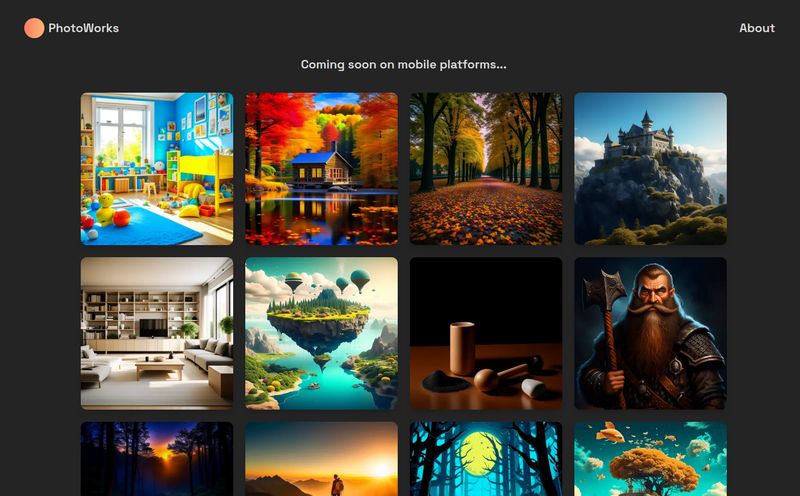The world of AI image generation feels a bit like a toddler's playroom after a birthday party. It's chaotic, exciting, and there are shiny new toys everywhere. You've got Midjourney over in the corner, building incredible sandcastles but only communicating through a weirdly specific Discord bot. You have Stable Diffusion, the giant box of LEGOs that can build anything, but you need an engineering degree to get started. Then there's DALL-E, the cool, popular kid who's super accessible but maybe a little... corporate.
As a developer and a marketer, my life for the past year has been a tangle of API keys, different pricing models, and wildly different prompt syntaxes. It’s a pain. A real, honest-to-goodness headache. So when I saw Picogen pop up—and noticed it snagged a 'Product of the Week' on Product Hunt—my curiosity wasn't just piqued; it was screaming for attention. Their claim? One API to access the best models. Simple as that.
Is it too good to be true? Or is this the universal remote for AI image generation we've all been secretly wishing for? I had to find out.
So, What's the Big Deal with Picogen?
At its heart, Picogen is an abstraction layer. A brilliant one, at that. Instead of you having to wrestle with the individual APIs for Midjourney, Stable Diffusion, and DALL-E, Picogen gives you a single, clean API endpoint. You send one request to Picogen, and they handle the messy business of talking to the right model to get your image generated. Think of it like a master translator who speaks every AI language fluently, so you don't have to.
They claim you can be up and running in under five minutes, and looking at their documentation, I believe it. The code snippet for a basic request is so simple it's almost beautiful. This isn't just a convenience; for a small team or a solo developer, that's the difference between launching a new feature this week versus next month.
The Toolbox: More Than Just Pretty Pictures
Okay, a unified API is great. But what can you actually do with it? This is where I went from interested to properly impressed. Picogen isn't just a simple passthrough; they've built a whole suite of tools around the core generation capability.
Realistic Text-to-Image That Just Works
This is the bread and butter, right? You give it text, it gives you an image. Picogen's output is fantastic, delivering visuals that are easily on par with the big names they're based on. Whether you're creating assets for a marketing campaign, generating blog post headers, or mocking up product concepts, the quality is there. No need to worry about which model is best for photorealism vs. artistic styles; you just prompt, and Picogen figures it out.
The Extra Magic: Blending, Backgrounds, and Upscaling
This is where Picogen really starts to pull away from the pack. It bundles in features that you'd normally need separate tools (and subscriptions) for.
- AI-Powered Image Blending: The ability to merge two images into a cohesive whole is a genuinely powerful tool for creative projects. Think artistic collages, unique social media graphics, or just plain fun experimentation.
- Smart AI Background Removal: Anyone who has ever spent an afternoon meticulously cutting out a product from its background in Photoshop just raised an eyebrow. Yes, Picogen can do it for you with an API call. For e-commerce sites, this feature alone could be worth the price of admission.
- Ultra-High Resolution AI Upscaler: This one got me excited. You can generate an image and then upscale it to a jaw-dropping 8K resolution. For anyone creating high-definition displays or materials for print, this is a game-changer. It takes a standard digital asset and makes it physically useful.
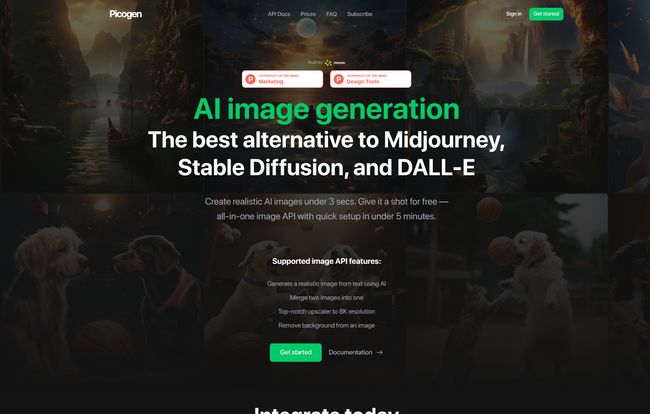
Visit Picogen
Let's Talk Turkey: A Real Look at Picogen's Pricing
Alright, this is the part where cool tech often falls apart. A great product with a terrible pricing model is just a tragedy. So, how does Picogen stack up? Surprisingly well, actually. Their structure seems built for both tiny testers and big businesses.
They operate on a credit system, which is pretty standard. Here’s my quick breakdown:
| Plan | Cost | Included Credits | My Take |
|---|---|---|---|
| Free | $0 / month | Pay-as-you-go | Perfect for kicking the tires. You can test everything without commitment. The queue is slower and you can only run one request at a time, but hey, it's free. |
| Start | $7.50 / month | 14,400 | Great for hobbyists or a very small business. The 4 concurrent requests are a decent step up from the free plan. |
| PRO | $14.99 / month | 36,000 | This feels like the sweet spot. For less than twenty bucks you get a ton of credits, 12 concurrent requests, and priority queue access. Most small to medium-sized businesses or serious developers will probably land here. |
| Business | $22.50 / month | 60,000 | For high-volume applications. The 24 concurrent requests and VIP queue mean your app will be flying. If image generation is a core part of your product, this is a no-brainer. |
The pricing feels fair and transparent. No hidden fees, and the ability to cancel anytime is the confidence I like to see. For more details you can always check their official pricing page.
The Good and The Could-Be-Better
No tool is perfect, so let’s get real. The biggest win for Picogen is undoubtedly the simplicity. It takes a complex, fragmented ecosystem and makes it accessible. The bundled features like the 8K upscaler and background removal aren't just minor perks; they're massive value-adds that save both time and money.
On the flip side, the limitations on the free plan, while understandable, are still limitations. If you need to generate images quickly or in parallel, you'll have to pony up for a paid plan. That's not a criticism, just a fact of life. Also, while the credit system is clear, you'll still need to do a little math to figure out your exact cost-per-image, as different actions might consume different amounts of credits.
Who Is This For, Really?
I see a few groups getting really excited about Picogen:
- Startups and Indie Devs: If you want to add a powerful AI image feature to your app without dedicating a developer to it for three months, this is your ticket. Fast integration means you can focus on your core product.
- Marketing Agencies & Content Creators: Imagine spinning up hundreds of unique, high-quality images for different campaigns, ad sets, or blog posts with a simple script. It's a massive productivity boost.
- E-commerce Businesses: Programmatically creating clean, high-resolution product shots with transparent backgrounds? Yes, please. This could streamline a huge operational bottleneck for many online stores.
Common Questions I Had About Picogen
How quickly can you actually start using the Picogen API?
Honestly, their claim of under 5 minutes holds up. If you know how to make a basic API call, you can sign up, get your key, and generate your first image in less time than it takes to make a cup of coffee. It’s seriously that straightforward.
What AI models does Picogen actually use?
They work with a custom-tuned model that is a top-tier alternative to Midjourney, Stable Diffusion, and DALL-E 2 & 3. Think of it as their own special sauce, made from the best ingredients. You get the quality without having to pick the specific brand yourself.
Can I use Picogen's generated images for commercial purposes?
Yes. This is a big one. The images you generate can be used for commercial purposes, making it a viable tool for real business, not just personal projects.
What's the highest resolution I can get?
The custom model can generate images up to 4K resolution. But with their incredible AI upscaler, you can take those images and blow them up to 8K, which is fantastic for high-detail work and print.
How many requests can I send at once?
This depends on your plan. The Free plan is limited to one request at a time. The paid plans offer higher concurrency, ranging from 4 on the Start plan all the way up to 24 on the Business plan. This 'concurrency' is what lets you build applications that feel fast and responsive to your users.
My Final Verdict on the Picogen API
I went in skeptical, and I'm coming out a fan. Picogen isn't trying to be a new AI model; it's trying to be the best way to access AI models. And in my opinion, it succeeds brilliantly.
It's a tool that understands its user: a developer, a marketer, a business owner who doesn't want to become an expert in the nuances of ten different AI systems. They just want a high-quality image, and they want it now. Picogen delivers that, with a clean API, fair pricing, and a genuinely useful set of bonus features. It's a powerful piece of plumbing for the new creative economy, and it's definitely earned a spot in my digital toolbox.
